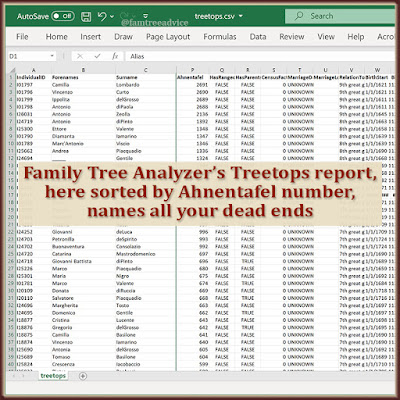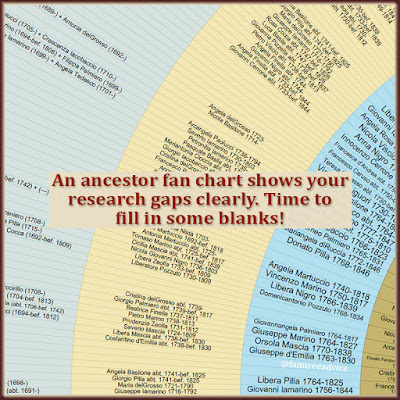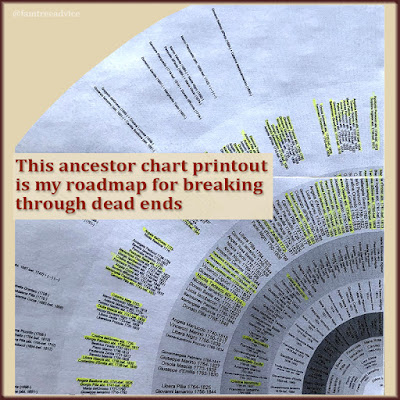I envy those of you who can find your ancestors' names in old newspapers. My people seemed to completely avoid making news.
There are no marriage announcements. No soirees on the society page. No birth announcements.
Last weekend I needed to see a 2002 obituary so I can try to help a woman research her birth parents. To see that obituary, I signed up for a free trial subscription to newspapers.com.
Since I have access for a few days, I may as well give my family searches another try. I started with some generic searches.
A search for my maiden name brings up an endless amount of articles mentioning my brother. He was the commissioner of different college sports conferences for many years. But as I scrolled beyond the Commissioner Iamarino articles, I found something else.
My brother was a sports writer for our local paper when he was fresh out of college. I downloaded 8 of his articles from the late 1970s and sent them to him. He has lots of saved articles from those days, but not these. He was happy to receive them.
 |
| Refine and restrict your search to keep from getting lost in the results. |
Look for Specific People
I tried a search for my full name. The one result was my sister's wedding announcement, which mentioned me. There wasn't an announcement for my wedding. Was I supposed to do that myself?
I went back further in my family tree. I searched for my great grandparents last names: Sarracino/Saracino and Saviano. Nothing. One recent article mentioned a distant Saviano cousin, but it had no value for me.
I shifted to my upstate New York relatives. My great grandmother who lived there was a Caruso, and she had a few brothers. I restricted my Caruso search to Chemung County, New York, in the early 1900s. I had to weed through a ton of articles on the famous singer, Enrico Caruso.
I did find one Caruso family that lived on the street where my grandmother was born. But I can't figure out their connection. Now I need to explore my great grandmother's Caruso nieces and nephews.
Search for Specific Events
I thought about an event from my childhood that I wanted to look up. A terrible car crash. It was May 18, 1970, and a pickup truck crossed into our lane and hit us head-on. This was before the days of seat belts. Our car's passenger door flew open, and I watched the pavement speeding past my face. My mom held onto me by my clothing with one hand, and steered us into a ditch on the side of the road with the other.
I was 10 years old. My mom saved my life. She suffered a broken collar bone and a bone-deep gash in her shin. I got cuts and scratches. But I have no idea what happened next. Mom must have gone to the hospital. Did I? I remember a passerby recognized us and stopped. She took the groceries from our wrecked car and drove them home to my brother and sister. That had to be interesting. I'll have to ask the family what they recall.
The local newspaper in 1970 was surprisingly thick in the middle of the week. I went through 44 pages hoping to find mention of the crash. But there was nothing.
 |
| I knew all about Dad's jet fighter bail out, but seeing all the news coverage is priceless. |
Limit the Search Results
To get past my brother's very public career, I narrowed down my maiden name search. I searched for my Dad's full name and quickly found something wonderful. My dad was an Air Force pilot who had to bail out of his crashing, disintegrating F84F jet airplane in 1955. I know the story well.
I already had a poor quality copy of an Athens, Alabama, article about the crash. It was big news in the little town where it happened. Now I have an excellent quality copy of that article, and several more mentions of the crash from other Alabama newspapers.
Next I thought about my Sarracino cousins in Western Pennsylvania. I searched for their last name and their town name. I found a few World War II-era mentions of the Sarracino brothers. The youngest one, Luigi, the article says, had just entered Basic Training.
I remembered that poor young Luigi is the one brother who died in the war.
My family hasn't left me many treasures in newsprint. But you'll probably do better. I mentioned I'm helping a woman investigate her birth parents. I found lots of obituaries for her family, and a big scandal that almost swallowed up her birth mother. That was a wild ride!
If you want to start a free one-week trial of newspapers.com, you may or may not see the offer on their website. I found it by searching Ancestry.com for obituaries. When I clicked to view the image of an obituary, I got the free trial offer.
Get your thoughts together. What will you search for? Try to have a bunch of searches ready to go, and make the best use of your time.




